Spice up your diet: How turmeric, chilli, cinnamon and ginger can help keep the doctor away
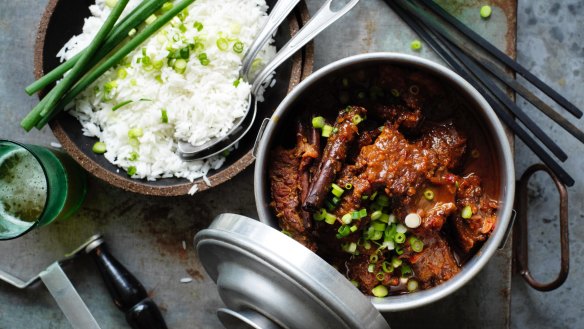
Turmeric kills cancer! Chilli helps burn fat! Slash your diabetes risk with cinnamon! We see headlines like these frequently but how good is the evidence that adding spices to food makes a lick of difference to our health?
The first thing to know is that headlines can only say so much.
A study might find that a certain spice can nuke cancer cells but the headline won't tell you how the research was done. Was it in people with cancer – or in a test tube? Experiments in test tubes and mice can be promising – but are a long way from proving an effect in humans with tumours. Then there's the dosage. Just because a spice helps improve a health problem in a study doesn't mean adding it to dinner will do the same – studies of spices often use supplements or extracts that deliver much more of a spice's active ingredient than you'd get from a curry.
There are many unanswered questions about spices and human health, but there are also clues that some, especially turmeric, ginger and chilli, have real benefits. And that eating more spice generally can help keep us well.
Research published in the American Heart Association's journal Hypertension last year found that lovers of spicy food had healthier blood pressure and ate less salt than people who ate less spice, while a 2015 study of more than 3 million people over seven years found that, compared with people eating spicy food less than once a week, those having spicy foods on all or most days of the week had a 14 per cent lower risk of mortality.
This makes sense to dietitian Caroline Trickey. When we think of foods rich in plant compounds, such as antioxidants, that can help protect our cells against damage, broccoli and blueberries spring to mind – yet spices are another rich source and adding them to food is an easy way to get more of these protective compounds into our diet, she says.
We love the idea that taking a nutrient in a food is always better.
One reason why compounds in turmeric and other spices may help counteract chronic diseases such as Alzheimer's, cancer, diabetes, depression and arthritis is that they have an anti-inflammatory effect – and low level chronic inflammation in the body is linked to all these diseases, says Trickey, who runs cooking classes in Sydney that teach an anti-inflammatory approach to cooking – meaning more plant foods, including spices.
"Spices make it easy to eat the whole foods we should eat more of. They're fantastic with legumes like chickpeas and lentils that can stand up to bold flavours like cumin, ginger, turmeric and paprika in dishes like tagines and soups. They can transform brussels sprouts if you roast them with spices and garlic," she says. "Flavours like these are a far healthier option than the 'hyperpalatable' flavours of highly processed foods that use so much salt, sugar, fat and artificial flavourings that it can be hard to stop eating them."
What the science says
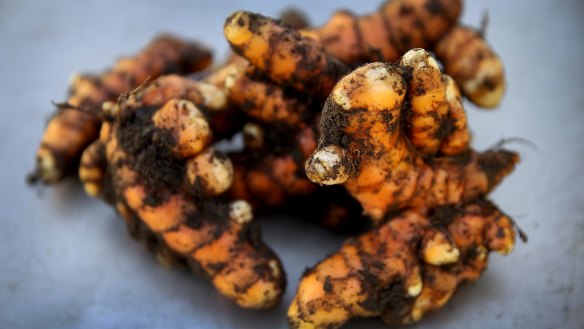
Turmeric
This is the rock star of the spice rack. More than 150 studies are now testing the potential of curcumin, one of turmeric's active ingredients, against chronic problems such as autism, inflammatory bowel disease, Alzheimer's, type 2 diabetes, cancer and depression.
Last year a study at the University of California, Los Angeles that gave curcumin supplements to a group of older people with mild memory problems found it improved memory after 18 months, compared with a group of people taking a placebo. Not only that, but the brains of those taking curcumin had less accumulation of amyloid plaques, the clusters of proteins that disrupt connections between brain cells and are thought to be a cause of Alzheimer's disease.
"It's encouraging, especially when trials of drugs to fight Alzheimer's have been disappointing. But you can't assume that curcumin in the diet will have the same effect because the supplement was delivered in a specific way, "says Professor Andrew Scholey, Director of Swinburne University's Centre for Human Psychopharmacology.
One problem with curcumin is its bioavailability – meaning its ability to reach the body's tissues – because the body processes it quickly and excretes it. It's slightly better absorbed when it's combined with fat and with piperine, the ingredient that gives black pepper its bite, he explains, but really the only way of ensuring absorption is to modify curcumin to make it more bioavailable.
Scholey's own research in 2015 found that giving a curcumin supplement formulated to be bioavailable to a group of healthy older people improved memory and concentration after 30 days compared with those taking a placebo. He and his co-researchers are now completing a follow-up study.
"Although a high intake of curcumin might help explain India's low rate of Alzheimer's, this may be an effect of having turmeric in food a few times a day over many years – a turmeric latte won't have the same effect," he points out. "It's a message people don't like. We love the idea that taking a nutrient in a food is always better, and there's no doubt that a healthy diet is the best way to get your nutrients, but in terms of delivering enough curcumin to have a meaningful effect you can't assume that using turmeric in cooking will be enough, although there are still benefits."
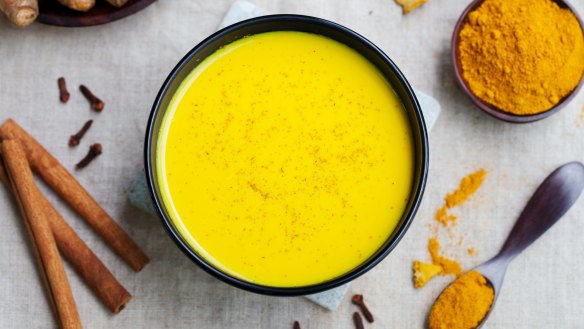
With dementia, one way that inflammation might play a part is by damaging the fine blood vessels that nourish the brain, delivering the oxygen and glucose needed for it to function.
"Studies have shown that curcumin can improve the ability of blood vessel walls to relax, improving blood flow," says Emeritus Professor Peter Howe of the University of Newcastle's School of Biomedical Sciences and Pharmacy, who is trying to find out if taking supplements of curcumin and fish oil regularly can improve blood flow in the brain in older, overweight and inactive adults – a group of people more likely to have stiffer blood vessels that can increase Alzheimer's risk.
"We're comparing fish oil and a curcumin supplement to see which delivers optimal blood flow to the brain - but the curcumin in the supplement we're testing is at least 60 times more potent than what you'd have in food."
Most of the evidence for health effects from turmeric comes from using supplements, but this doesn't mean that using turmeric in cooking has no health benefits. For one thing, there's still a lot to learn about how turmeric and other spices might affect our health, and curcumin is only one component of turmeric. There are other potentially useful ingredients and some studies have found that curcumin-free turmeric – turmeric with the curcumin removed – has anti-inflammatory effects too. Then there's the fact that foods often work as a team with one enhancing the benefit of another – and research has found that adding turmeric to vegetables in cooking increases the availability of betacarotene in the vegetables.
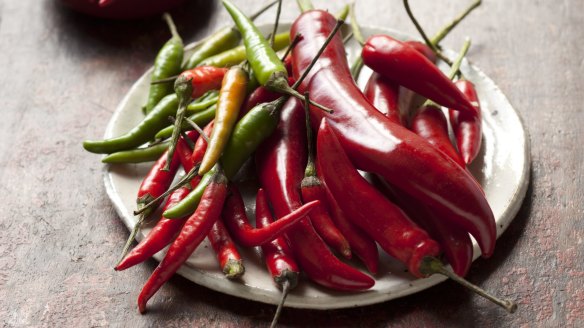
Chilli
Capsaicin, the ingredient in chilli that brings the heat is hyped as helping with weight loss, as is a milder ingredient in sweet peppers called capsiate. But while both ingredients can boost kilojoule burning, the effect is small; in one study people taking capsiate over a 12-week period lost just 0.4 kilograms of weight and one centimetre off their waist measurement.
But while chilli might not melt much fat, it might help you live longer. When US researchers looked at the diets of more than 16,000 people over a 23-year period they found that chilli eaters had a 13 per cent lower risk of death compared to non-chilli eaters. Why chilli might be protective isn't clear but one theory is that it might help prevent heart disease – animal studies suggest capsaicin improves the health of arteries
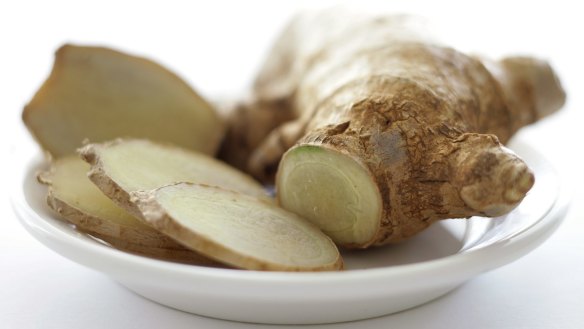
Ginger
Ginger supplements can ease osteoarthritis pain and the hope is that this spice may also help fight off cancer. Although studies are looking at its potential to prevent or treat a number of cancers including breast and prostate cancer, there's a long way to go to find out if it works. But the good news for anyone having cancer treatment is that ginger may ease nausea, one of chemotherapy's most common side effects, says Dr Wolf Marx, whose research at Bond University last year compared people taking a high dose (1.2 grams) of standardised ginger extract for three cycles of chemo with a group taking a placebo.
"Both groups kept taking anti-nausea medication but those taking ginger had less fatigue and better quality of life in terms of how nausea affected their daily functioning like daily chores or work. The best evidence for why it works suggests that a group of compounds in ginger called gingerols and shogaols block receptors in the gut which may trigger nausea," he explains.
However, anyone having chemo who wants to try ginger supplements should check with their doctor first, he adds.
Ginger is rich in hundreds of other phytochemicals including eucalyptol, phenols, betacarotene, capsaicin and curcumin which scientists believe are responsible for ginger's therapeutic actions says nutritionist Catherine Saxelby, whose newly updated Complete Food and Nutrition Companion includes good information on spices.
"With very few kilojoules and virtually no fat, a tablespoon of grated fresh ginger adds its pungent flavour and aroma without adding to your waistline," she says.
It also makes a wonderful warming tea. Saxelby suggests placing two or three slices of fresh ginger in a cup, pouring hot water over it and steeping for few minutes (the longer you leave it the hotter the flavour) and adding lemon juice and honey to taste.
Cinnamon
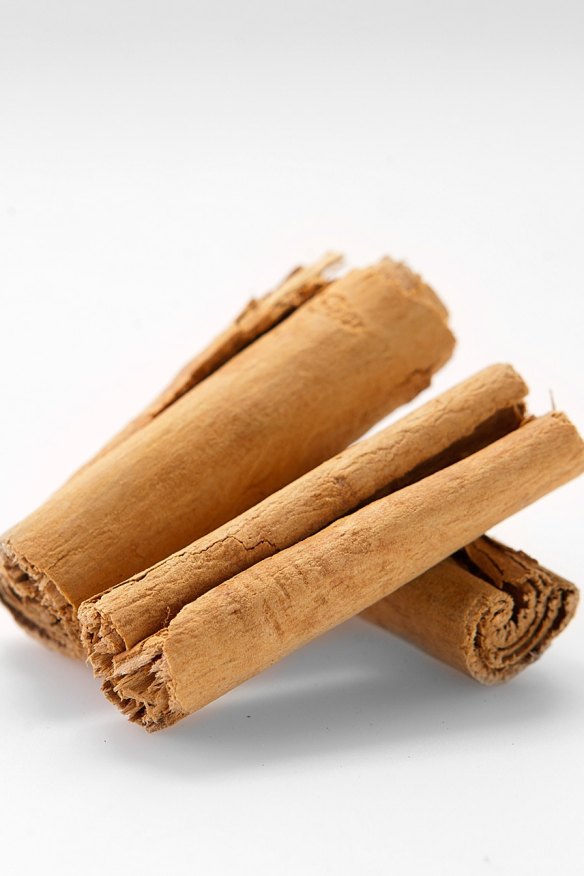
Can a teaspoon of cinnamon bring your blood sugar down? Despite headlines linking it to better blood glucose control, don't assume that spicing your food with cinnamon will have the same effect, says dietitian Dr Alan Barclay, author of Reversing Diabetes.
"There's definitely evidence for a therapeutic benefit of cinnamon on blood glucose levels but cinnamon used in clinical trials is often in the form of a purified extract and you can't assume that the cinnamon in the supermarket is as potent - a lot can depend on where a plant is grown, for instance. People with diabetes often ask me if they should use cinnamon and I say 'yes, but don't change your medication'."
There are other good reasons to use cinnamon – it can add flavour to rice dishes so you need less salt. It also contains potassium which helps balance sodium in the diet and in turn helps keep blood pressure healthy.
There are two types of cinnamon – real cinnamon grown in Sri Lanka, and cassia, which is grown in Indonesia and often labelled as cinnamon (go to herbies.com.au to understand the difference). Most studies looking at the effect of cinnamon on blood glucose levels have used cassia, Barclay says. And a word of warning: coumarin, an ingredient in both types of cinnamon, but especially in cassia, has caused liver problems in some sensitive people when consumed in excessive amounts.
What we need are more long-term studies to nail down how useful cinnamon might be for glucose control, adds Catherine Saxelby. "But in the meantime, sprinkle it over your breakfast porridge instead of sugar. It may help and there's no downside," she writes.
Cinnamon is probably not the only spice with such good news, she adds. Other spices such as nutmeg and cloves may also turn out to have similar benefits.
"We already know that most spices are extremely rich in nutrients such as betacarotene, certain B vitamins and antioxidants but the tiny amounts used in cooking are not usually significant sources of nutrition. If you use them, be generous in how much you use."
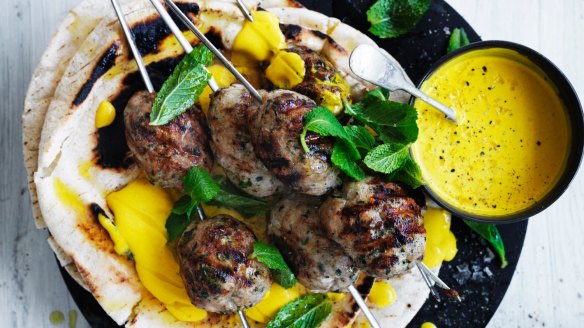
Six ways to spice up your diet
▪ Use spices to add colour as well as flavour – turmeric in a salad dressing, on roasted cauliflower or to brighten rice, couscous or white quinoa; red paprika on scrambled eggs.
▪ Add more spice at breakfast. A sprinkle of cinnamon added to poached fruit and yoghurt; powdered ginger or cinnamon tossed through muesli or granola.
▪ Be generous with ginger. Keep a big root of fresh ginger in the fridge and grate it directly into a stir-fry, an Asian-style soup or even a dressing. Make a miso and ginger dressing for salads based on barley, quinoa or brown rice (Caroline Trickey whisks together two tablespoons of miso, 1½ tablespoons of brown rice vinegar, 1½ tablespoons of mirin, two teaspoons of tamari and one teaspoon of finely grated fresh ginger in a bowl)
▪ Roast brussels sprouts with chilli and cinnamon
▪ Roast carrots with dukkah and garlic or sweet potato with freshly ground nutmeg
▪ Add spice to grilled or barbecued meat. A 2010 study published in the American Journal of Clinical Nutrition found that a mix of ginger, oregano, rosemary and black pepper added to hamburgers before cooking reduced levels of carcinogenic compounds produced by grilling meat.
Spice mixes are a true convenience food. Good quality spice mixes can upgrade a dish with minimal effort – think chermoula added to baked salmon, a dusting of dukkah on hummus, smashed avo or bruschetta, or berbere, the earthy Ethiopian spice blend that works magic on black beans, French lentils or roast veg. Herbies Spices and the Gewurzhaus, which has shops in Sydney and Melbourne, have great spice mixes.
Fresh turmeric v dried
Which is best? It depends on what you're cooking. As with any spice, the dried version is much stronger says spice guru Ian Hemphill of Herbie's Spices and author of The Spice and Herb Bible. "You'd use fresh turmeric in an Asian curry paste or a dish that's not being cooked for very long and has lots of other fresh ingredients. Dried turmeric powder would always be best in a curry or a tagine and anywhere where you need a stronger flavour."
As with cinnamon, there are two types of turmeric. Madras turmeric has a paler colour, milder flavour and is the one most often seen in supermarkets. On average, it has a curcumin content of 3.5 per cent, says Hemphill. Alleppey turmeric which has a darker colour, richer flavour and more curcumin (around 6.5 per cent) is better in curries and tagines, he says.
The best recipes from Australia's leading chefs straight to your inbox.
Sign upFrom our partners
Original URL: https://www.theage.com.au/goodfood/tips-and-advice/spices-20180531-h10sj8.html